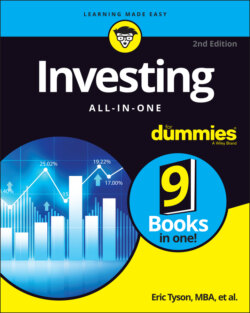Читать книгу Investing All-in-One For Dummies - Eric Tyson - Страница 42
The value of getting a few extra percent
ОглавлениеAs discussed earlier in this chapter, investing in the stock market (and real estate) can be risky, which logically raises the question of whether investing in stocks and real estate is worth the anxiety and potential losses. Why bother for a few extra percent per year?
Here’s a good answer to that sensible question: Over many years, a few extra percent per year will increase your nest egg dramatically. The more years you have to invest, the greater the difference a few percent makes in your returns (see Table 2-3).
These numbers are simply amazing! Start first with the 25-year column in Table 2-3. For every $1,000 invested over 25 years, you’ll have $1,282 at a 1 percent annual return. At a 9 percent return, you’ll have $8,623, or nearly seven times as much!
TABLE 2-3 How Compounding Grows Your Investment Dollars
| For Every $1,000 Invested at This Return | In 25 Years | In 40 Years |
|---|---|---|
| 1% | $1,282 | $1,489 |
| 2% | $1,641 | $2,208 |
| 3% | $2,094 | $3,262 |
| 4% | $2,666 | $4,801 |
| 5% | $3,386 | $7,040 |
| 6% | $4,292 | $10,286 |
| 7% | $5,427 | $14,974 |
| 8% | $6,848 | $21,725 |
| 9% | $8,623 | $31,409 |
Now look at what happens over 40 years. At a 9 percent investment return, you’ll have more than 21 times as much money versus what you’d have with a 1 percent annual investment return.
Here’s a practical example to show you what a dramatic difference earning a few extra percent can make in accomplishing your financial goals. Consider a 30-year-old investor who’s saving toward financial independence/retirement on a $60,000 annual salary. Suppose that their goal is to retire by age 67 with about $45,000 per year to live on (in today’s dollars), which would be about 75 percent of the investor’s working salary.
If this person begins saving at age 30, they need to save about $690 per month if you assume that they earn an average return on investments of about 5 percent per year. That’s a big chunk to save each year (about $8,300) — amounting to about 14 percent of gross (pretax) salary.
But what if this investor can earn an average return of just a few percent more per year — 8 percent instead of just 5 percent? In that case, the same goal could be accomplished by saving just half as much: $345 per month (or $4,150 per year)!
